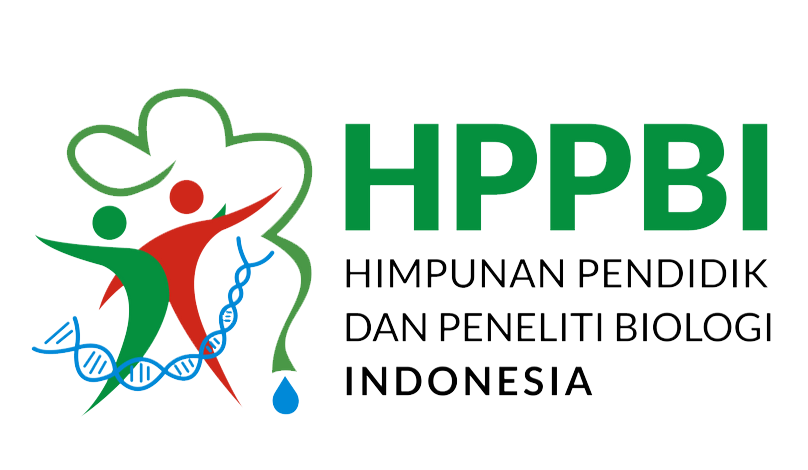IDENTIFIKASI KESULITAN BELAJAR SISWA SAAT PEMBELAJARAN DI KELAS KELAS VI MI WAISELANG
Abstract
Abstract
Background: Student learning difficulties are a condition where students cannot learn normally, due to threats, obstacles or disruptions in learning.
Methods: This research is a descriptive study which aims to determine students' learning difficulties in class VI MI Waiselang. This research uses a survey where related parties are asked to fill out several questionnaires regarding their experiences conducting online learning during the Covid-19 pandemic. Data analysis uses Likert scale analysis techniques. The instruments used in this research were questionnaires and interviews.
Results: The results of the research show that the maximum respondent score is 30, so a presentation worth 3.00% is obtained, students with a maximum respondent score is 1,935, then a presentation worth 1.71% is obtained.
Conclusion: The research interval data is a score of 0-19.99 with 8 frequencies with strongly disagree criteria, then a score of 60-79.99 with 1 frequency with agree criteria.
Downloads
References
Diki, D. 2013. Creativity for Learning Biologi in Higher Education. LUX: A Journal of Transdiciplinary Writing and Research from Claremont Graduate University: Vol. 3: Iss. 1, Article 3.
Dikti, D. (2020). Surat Dirjen Dikti Nomor : 302/E.E2/KR/2020 Tentang Masa Belajar Penyelenggaraan Program Pendidikan.
Emda, A. 2011. Pemnfaatan Media dalam Pembelajaran Biologi di Sekolah. Jurnal Ilmiah DIDAKTIKA. Vol.12(10,149-162)
Enriquez, M. A. S. (2014). Students ’ Preception on the Effectiveness of the Use of Edmodo as a Supplementary Tool for Learning. Dlsu research congress. https://doi.org/10.1017/CBO9781107415324.004
Firman, F., & Rahayu, s. (2020). Pembelajaran Online di Tengan Pandemi Covid-19. Indonesia Journal of Educational Science (IJES), 2(2), 81-89.
Gebre, Leake. 2008. Choosing Educational Toys For Children With Learning Disability. Diakses: 2 Desember 2015. Online: http://ezinearticels.com/?Choosing-Educational-Toys-For-Childern-With-Learning-Disability&id=144929.
Gikas, J., & Grant, M. M. (2013). Mobile computing devises in higher education: Student prespectives on learning with callphones, smartphone & social media. Interten and higher education. https://doi.org/10.1016/j.iheduc.2013.06.002
Hasanah, dkk 2020. Analisis Aktivitas Belajar Daring Mahasiswa Pada Pandemi COVID-19. Jurnal Pendidikan. Volume 1 No.1.
Iftakhar, S. (2016). GOOGLE CLASSROOM: WHAT WORKS AND HOW? Journal of Education and Social Sciences.
Istamar Syamsuri, dkk. 2004. BIOLOGI UNTUK SMA KELAS X, Penerbit Erlangga
Kumar, V. ., & Nanda, P. (2018). Social Media in Higher Education. Internayional Journal of Information and Communication Technology Education. https://doi.org/10.4018/ijicte.2019010107
Kuntarto, E. (2017). Keefektifan Model Pembelajaran Daring Dalam Perkuliahan Bahasa Indonesia di Perguruan Tinggi. Indonesia Lengague Education and Literature, 3(1), 99-110. 10.24235/ileal.v3il.1820
Korucu, A. T., & Alkan, A. (2011). Differences between m-learning (mobile learning) and e- learning basic terminology and usage of m-learning and education. Procedia – Social and Behavioral sciences. https://doi.org/10.1016/j.sbspro.2011.04.029
Kusniyah & Hakim,L . (2019). Efektifitas Pembelajaran Berbasis Daring: Sebuah Bukti pada Pembelajaran Bahasa Inggris. Jurnal Pemikiran dan Penelitian Pendidikan, Vol. 17 No.1.
Martins, M. de L. (2015). How to Effectively Integrate Technologynin the Foreign Language Classroom for Learning and Collaboration. Procedia – social and Behavioral Science, Vol. 174, Halm. 77-84
Miles, M. B., & Huberman, M. (1994). Qualitative Data Analysis Second Edition. SAGE Publication.
Milman, N. b. (2015). Distance Education. In International encyclopedia pf the Social & Behavioral Science: Second Edition. https://doi.org/10.106/B978-0-08-097086-8.92001-4
Moch Ansori dan Djoko Martono, 2009. BIOLOGI, Jakarta : Pusat Perbukuan
Moore, J. L., Dickson-Deane, C., & Galyen, K (2011). E-Learning, online learning, and distance learning environments: Are they the same? Internet and Higher education. https://doi.org/10.106/jiheduc.2010.10.001.
Oknisih, n., & Suyoto, S. (2019). PENGGUNAAN APLEN (APLIKASI ONLINE) SEBAGAI UPAYA KEMANDIRIAN BELAJAR SISWA. In SEMINAR NASIONAL PENDIDIKAN DASAR (Vol. 1, no. 01)
Prasojo, Lantip Diat, & Riyanto. (2011). Teknologi Informasi Pendidikan. Yogyakarta: Graha Ilmu.
Prayitno. (2004). Dasar-dasar Bimbingan dan Konseling Islam. Jakarta: Rineka Cipta.
Rusmawan. 2012. Faktor yang mempengaruhi kesulitan belajar IPS siswa sekolah dasar. Diakses: 18 November 2015.
Rustiani, R., Djafar, S., Rusnim, R., Nadar, N., Arwan, A., & Elihami, E. (2019), October). Measuring Usable Knowledge: Teacher’s Analyses of Mathematics for Teaching Quality and Student Learning. In International Conference on Natural and Social Sciences (ICONSS) Proceeding Series (pp. 239-245).
Sicat, A. S. (2015). Enaching College Students’ Proficiency in Business Writing Via Scholoogy. International Journal of Education and Research
Smith, A. W., & Freedman, D. O. (2020). Isolation, quarantine, social distancing and community containment: pivolt role for old-style public health measures in the novel coronavirus (2019-nCov) outbreak. Journal of Travel Medicine, 27 (2).
So, S. (2016). Mobile Instant messaging support for teaching and learning in higher education. Internet and Higher education. https://doi.org/10.1016/j.ihrduc.2016.06.001
Sofyan & Abdul. 2019. Pembelajaran Daring Kombinasi Berbasis Whatsapp Pada Kelas Karyawan Prodi Teknik Informatika Universitas PGRI Madiun. Jurnal Nasional Pendidikan Teknik Informatika. Volume 8 Nomor 1, Halm. 81-86
Suharsimi Arikunto. (2010). Prosedur Penelitian. Jakarta. PT Rineka Cipta.
Sulaiman, dkk. 2008. The level of cognitive Ability among Learning Disabilities Children in Malacca Malaysia. Diakses 18 Oktober 2015. Online: http://www.ccsenet.org/journal/index.php/ijps/articels/download/10747/7596
Sun, S. Y. H. (2014). Learner prespectives on fully online language learning. Distance Education. https://doi.org/10.1080/01587919.2014.891428
Van Steenburge, H. 2010. Mathematics Learning Difficulties In Primary Education: Teachers’ Professional Knowledge And The Use Of Commercially Available Learning Packages. Diakses: 1 November 2015. Online: http://users.ugent.be/~mvalcke/CV/CALP_ed_studies.pdf.
Yaumi, Muhammad. 2018. MEDIA DAN TEKNOLOGI PEMBELAJARAN. Jakarta : PRENADAMEDIA GROUP.
Zhang, D., Zhao, J. L., Zhou, L., & Nunamaker, J. F. (2004). Can e-learning replace classroom learning? Communications of the ACM. https://doi.org/10.1145/986213.986216
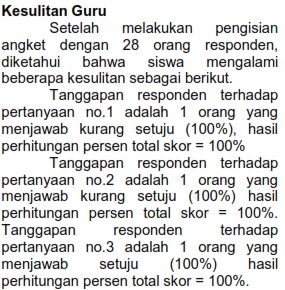
Authors who publish with this Journal agree to the following terms:
- Author retain copyright and grant the journal right of first publication with the work simultaneously licensed under a creative commons attribution license that allow others to share the work within an acknowledgement of the work’s authorship and initial publication of this journal.
- Authors are able to enter into separate, additional contractual arrangement for the non-exclusive distribution of the journal’s published version of the work (e.g. acknowledgement of its initial publication in this journal).
- Authors are permitted and encouraged to post their work online (e.g. in institutional repositories or on their websites) prior to and during the submission process, as it can lead to productive exchanges, as well as earlier and greater citation of published works

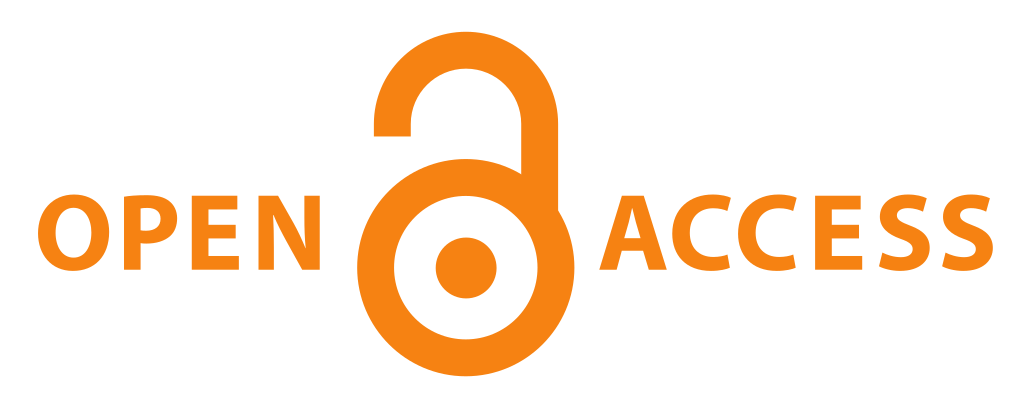

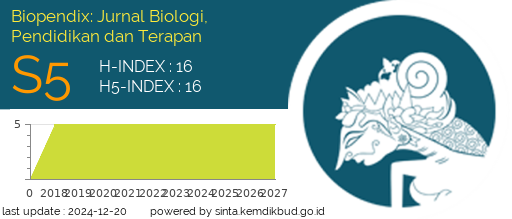
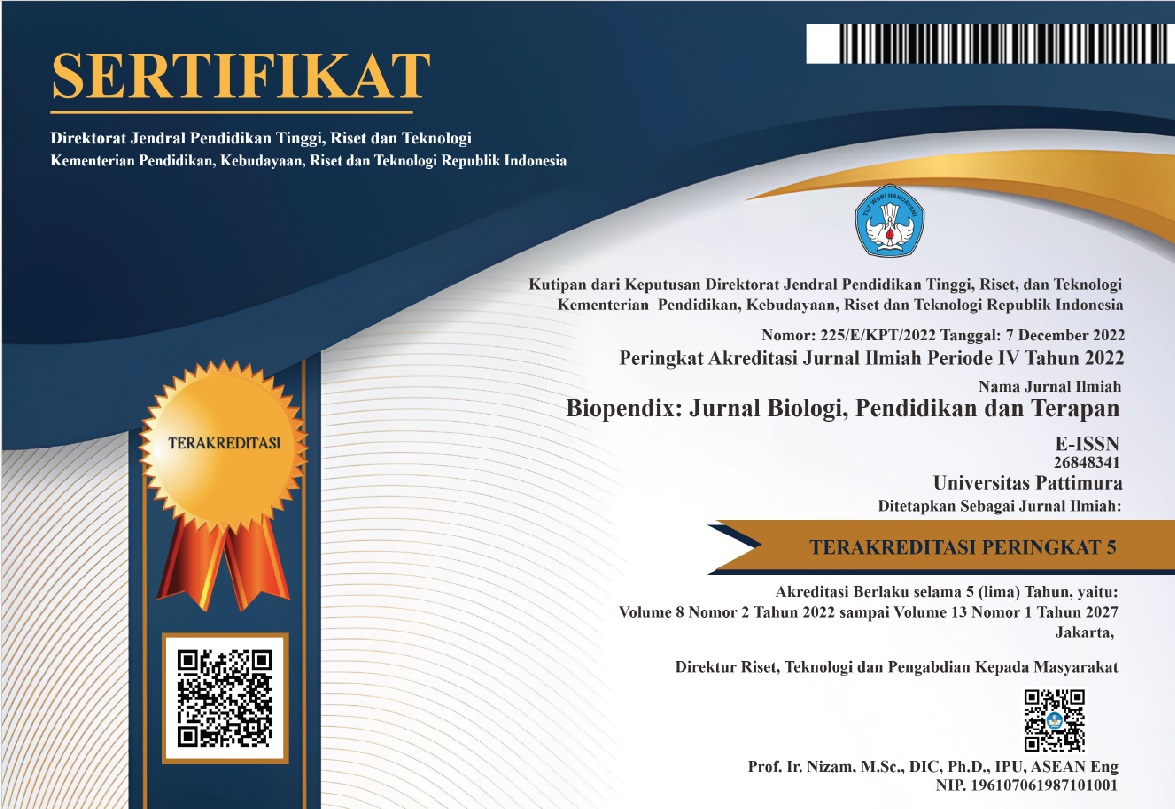 2
2




